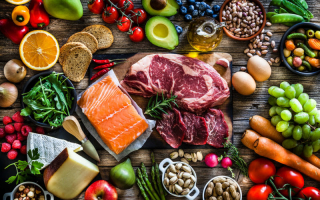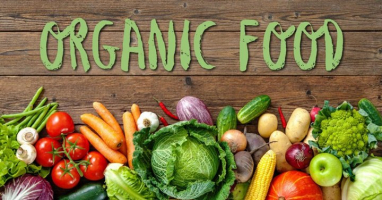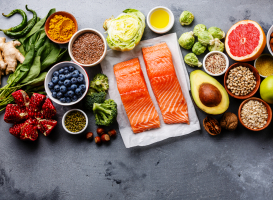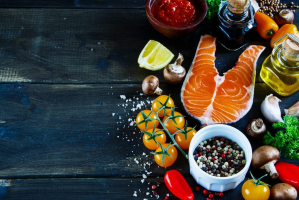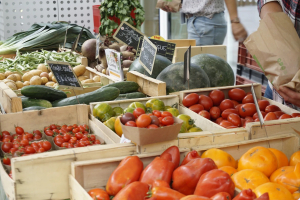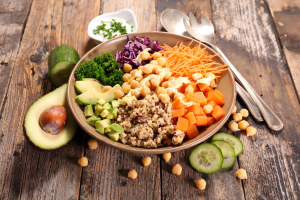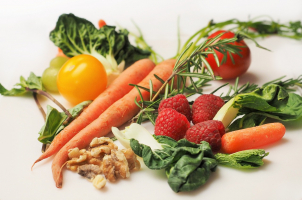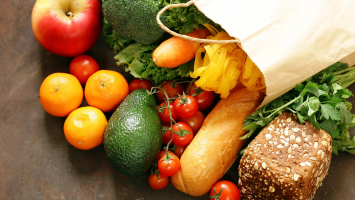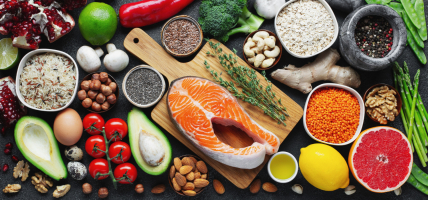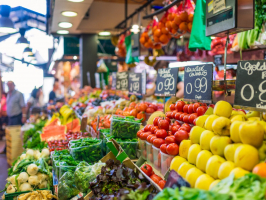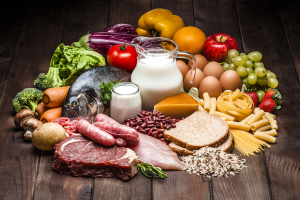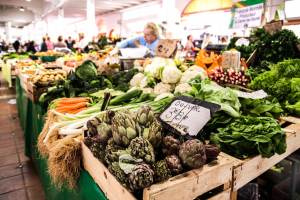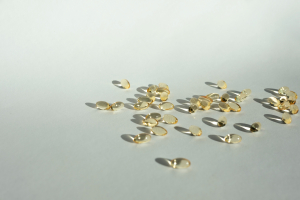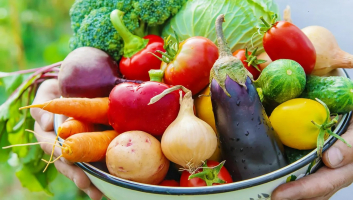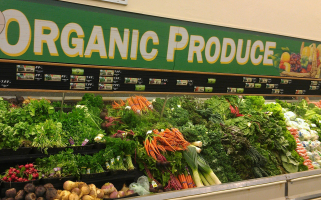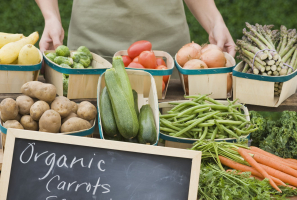Top 10 Best Organic Baby Nuts
Entering the weaning stage, the baby's digestive system develops very quickly and can tolerate nutrients from popular cereals. Cereal is the common name for ... read more...nuts such as rice, beans, almonds, oats, walnuts, etc., which provide a lot of fiber for a clean and healthy digestive system. Adding cereals to meals will help children get enough nutrients and prevent many diseases. A current trend among nursing mothers is to learn about organic nuts to add to their baby's weaning menu. Let's learn about the following nuts and how to prepare them for the most nutritious!
-
Quinoa is a grain containing many nutritional values not only for babies during the weaning period in particular but also for all family members. Quinoa seeds have a bitter shell that animals do not like to eat, so when growing quinoa, people do not need to use pesticides. That helps nursing mothers reduce their worries about pesticides, fertilizers or other chemicals when using and makes quinoa one of the most trusted organic nuts used by nursing mothers. After harvesting, quinoa seeds are usually processed to remove the outer skin, which contains bitter saponins. Quinoa is cooked like rice and can be used in many dishes.
There are about 12 different types of quinoa, but the most common are white quinoa, black quinoa, and red quinoa. White quinoa has a milder, softer taste than the other two types of quinoa. When cooking baby porridge or cooking with rice, mothers should choose white quinoa because it is easier to eat and has a lighter taste. Quinoa contains 9% water, 70% glucid, 15% protein and 2.3% lipid (omega 3), fiber and many minerals, manganese, iron, copper, zinc, phosphorus and vitamin B2 (riboflavin) and vitamin C. The glucid content of Quinoa is similar to that of whole grains, but especially contains all the essential amino acids comparable to milk. Quinoa is also rich in minerals (calcium, magnesium and manganese), B vitamins, vitamin E and fiber, so it is very suitable for the immature digestive system of children. Quinoa contains nine important amino acids that are essential for muscle cell reproduction and nutrient absorption. The amount of protein in quinoa is essential in providing calcium (calcium) to the bones.
Some ways to prepare Quinoa for baby weaning:
- Lotus seed and quinoa milk: Soak quinoa for 2 hours. Soak fresh lotus seeds, remove lotus heart (dry lotus seeds soak for 2-3 hours). Wash the quinoa seeds thoroughly to remove the bitter taste. Put in the pot to cook for about 20-30 minutes, then add fresh lotus seeds to cook together (if the lotus seeds are dry, add them from the beginning). Simmer until the 2 seeds are fully cooked, grind them, filter the milk and give it to your baby to enjoy.
- Cooking porridge for babies: Wash the quinoa seeds to remove dirt, then soak for 2-3 hours until the seeds are soft and then mix with rice to cook porridge for babies. Mothers should try little by little in proportion and then gradually increase. For children who have eaten rice, cook it with crushed rice for your baby to eat like white rice every day, but the taste will be much stronger. When having porridge / Quinoa rice, mothers can mix other foods such as vegetables, meat (chicken, beef, pork ...), eggs and so on to supplement nutrition for children.
- Quinoa, Broccoli and Goby Porridge: Porridge cooked separately. Soak the quinoa for 3 hours, then change the water and simmer for 15 minutes to soften. Steamed goby cooked, remove the meat and then prepare with oil to make porridge fragrant and goby less fishy. Puree boiled broccoli. When the porridge is cooked, you bring the quinoa seeds and goby to a boil, then bring the broccoli to a boil, turn off the heat and scoop it out on a plate for your baby to enjoy.
- Quinoa mixed rice: Heat oil in a pan, lightly fry 1 cup of quinoa (200g), washed, drained, and chopped. Then, add 1.5 cups of water to the pan, cover and continue to simmer for about 15 minutes until the seeds are tender. Next you can mix in any vegetables you like. You finally have a healthy and delicious Quinoa.
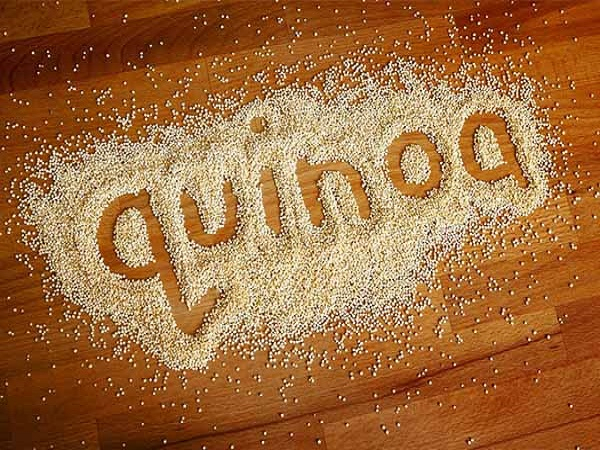
https://toplist.vn/ 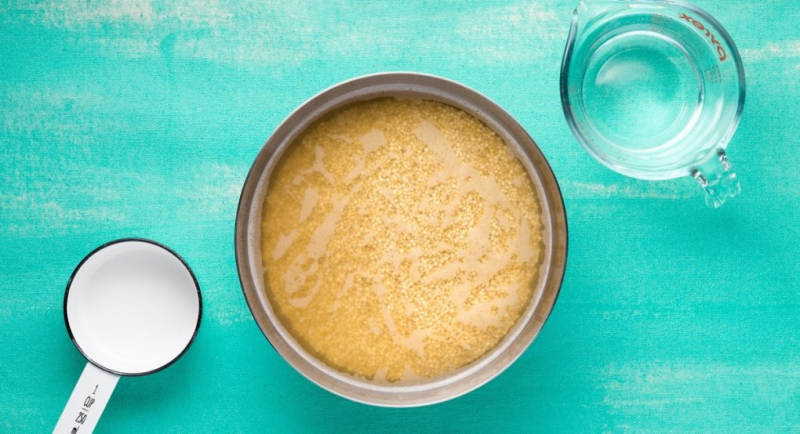
https://toplist.vn/ - Lotus seed and quinoa milk: Soak quinoa for 2 hours. Soak fresh lotus seeds, remove lotus heart (dry lotus seeds soak for 2-3 hours). Wash the quinoa seeds thoroughly to remove the bitter taste. Put in the pot to cook for about 20-30 minutes, then add fresh lotus seeds to cook together (if the lotus seeds are dry, add them from the beginning). Simmer until the 2 seeds are fully cooked, grind them, filter the milk and give it to your baby to enjoy.
-
Lentils are a member of the legume family that is rich in protein and fiber, which is great for the growth of young children. Moreover, lentils are low in fat but contain other micronutrients such as iron, phosphorus, potassium, folate, etc. In the composition of lentils, there is a significant amount of insoluble fiber to help reduce the risk of constipation, support for the digestive system of children in the process of new weaning. Adding lentils to your child's diet will help reduce toxic waste in the body and improve health. prevent other digestive problems.
Not only that, lentils are one of the richest plant-based sources of protein. Of all the legumes, lentils have the most protein. About 26% of the calories in lentils are made up of protein. As a result, lentils are one of the healthiest alternatives to animal protein sources for your little one. To make lentils easier for babies to eat, you can soak them for a few hours or overnight, drain, rinse, and cook until tender. Red lentils do not need to be soaked as they cook very quickly. You can add lentils to soups and stews once your baby is ready to eat solids.
Some ways to prepare Lentils for baby weaning:
- Lentil and brown rice porridge: Wash the rice, beans, and lotus seeds and put them in a strainer to drain. The ear spectrum washes away the layer of salt clinging to it. Putting universal ear into the porridge pot will make the porridge quickly, mildly sweet, and rich in minerals. Put all the ingredients in the pot. Add a lot of water and cook. If you cook it in a casserole, or a pressure cooker, the porridge will cook quickly
- Red lentil and chicken porridge: Washed celery, carrots, chopped celery, peeled carrots, diced. Soak red lentils in water overnight. Wash chicken, cut into bite-sized pieces. Take the pan, heat the oil in a pan over medium heat, then add the leeks and sauté for about 5 minutes or until tender. Add the carrots, chicken, lentils and water and cook until the chicken and vegetables are tender. Next, you put the ingredients into the blender, puree the above mixture, can add water if necessary to create the necessary consistency and thinness of the porridge. When feeding your baby, put the porridge in the pot to boil again for about 1-2 minutes, turn off the heat and then add a little olive oil for the baby to eat. So you have completed the delicious and nutritious red lentil porridge for your baby to eat
- Oatmeal, red lentils, shrimp and hemp porridge: Oats soaked to bloom. Soak lentils overnight. Preliminarily processed shrimp, cut into small pieces, marinated in onion, garlic, and chili powder. Heat a pan, add butter, and sauté the shrimp until cooked, set aside. Then put the oatmeal and lentils in the pot, add water and cook until cooked, season with salt and seasoning. Turn off the stove and put the shrimp in a bowl with hemp seeds and you're done
- Lotus seed and lentil milk: Soak lentils and lotus seeds for about 1 hour. Put both lentils and lotus seeds in a pot, pour in the prepared filtered water and cook until soft. In the pot of cooled beans, we puree them with jaggery (no sugar for new babies). Strain through a sieve to remove the residue and give it to your baby to enjoy.
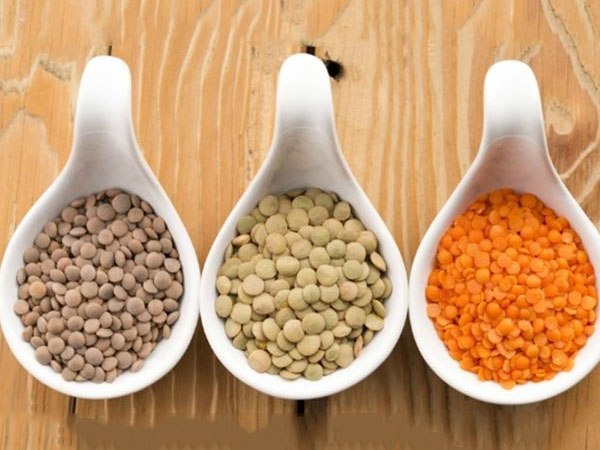
https://toplist.vn/ 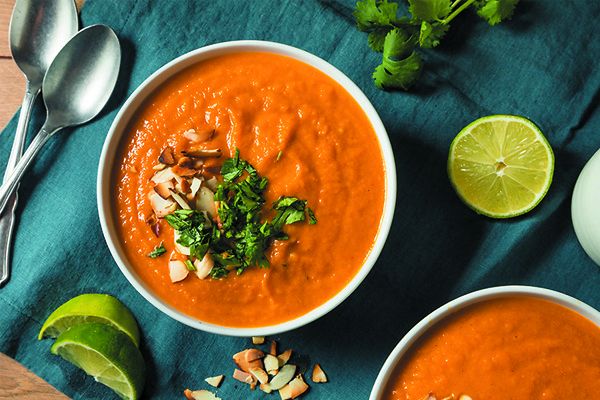
https://toplist.vn/ -
Chia seeds are nutritious seeds that are very good for human health, especially children. The fiber present in chia seeds helps to clean the intestines, remove dirt in the digestive tract of the baby, help the baby to have easier bowel movements and not be constipated. In particular, chia seeds contain a large amount of unsaturated fats, Omega-3 and other very important fatty acids, which are a constituent of more than 60% of brain cells, helping to support the development process. children's neurons, help them perceive the world, and be exceptionally intelligent. Not only are the main components of brain cells, Omega 3 and Omega 6 fats also make up more than 95% of retinal cells.
Chia seeds contain a large amount of protein and essential amino acids, which also help provide energy for children to move throughout the day. For children who are hyperactive and like to run and jump, adding 50 grams of chia seeds per day is very good to maintain energy for children. Not only that, with a high fiber content, chia seeds also help supplement the amount of nutrients from vegetables for children. Children often tend to hate eating dishes from green vegetables, thus making them deficient in fiber. With the advantage of being odorless and tasteless, chia seeds are easy to combine with other foods that your baby likes, supplementing enough nutrients missing from a diet with insufficient green vegetables. It should be noted that chia seeds also create a feeling of fullness, so people who need to lose weight should take it before meals, and people who want to gain weight or children of growing age should use it after meals so as not to affect the portion.
Some ways to prepare Chia seeds for baby weaning:
- Chia seeds and warm water: The best and simplest way is to put the chia seeds in warm water, soak for 3-5 minutes and stir well so that the chia seeds expand into a Gel layer and give it to your baby to drink.
- Chia seed juice/yogurt: Add about 10g (1 tablespoon chia seeds) to water or juice (such as orange, lemon or soy milk), stirring occasionally to avoid lumps. Wait about 10 minutes to divide and then drink. With yogurt, mom can completely feed her baby without waiting.
- Chia seed cake: In addition to being used for water dishes, chia seeds combined with dry dishes are also extremely delicious. Grind chia seeds (or buy chia seed powder) and mix them with flour, eggs, milk... to make cakes. Alternatively, you can sprinkle chia seeds directly on the cake you just made, or grind the chia seeds and mix them with the flour, then put them in the oven.
- Oatmeal and chia seed porridge: Soak chia seeds in warm water to soften, oats soak in milk or heat with milk to soften. Strain the chia seeds through a sieve, take only the part that has bloomed, and then add it to the mixed milk-soaked oats and let your baby enjoy.
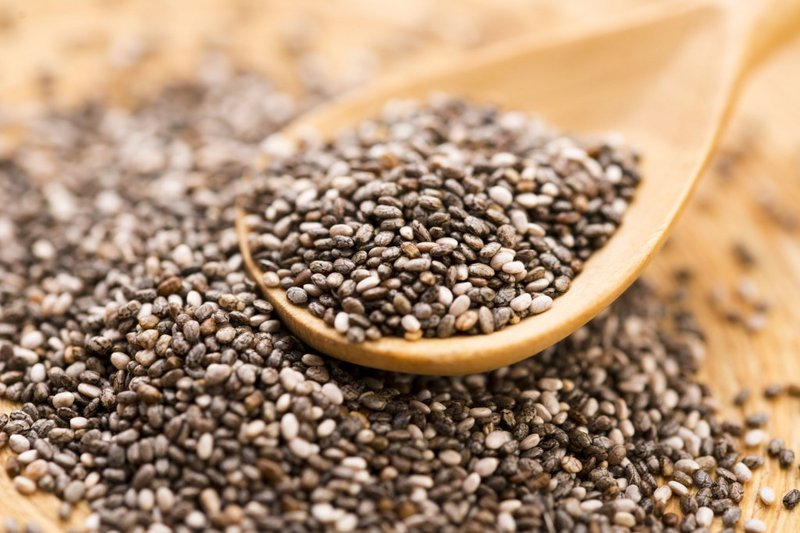
vinmec.com 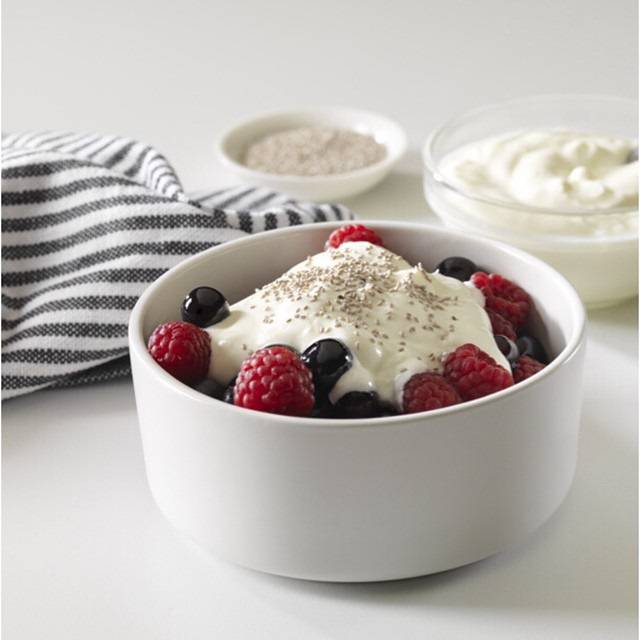
https://toplist.vn/ -
Chickpeas are famous for being the type of bean that contains the most nutrients in the legume family and is especially good for the health of pregnant women and young children. Recently, this bean has been introduced to Vietnam, creating So it's a fever for mothers who are breastfeeding their babies. Chickpeas are known to be seeds containing a lot of fiber, preventing constipation, promoting the baby's digestive system. Besides, iron, phosphorus, calcium, magnesium, manganese, zinc and vitamin K in chickpeas help build and maintain bone structure, helping the baby grow taller. Chickpeas are considered a vegetable and protein food, helping you supplement your baby with both important food groups at the same time.
The iron, phosphate, calcium, magnesium, manganese, zinc and vitamin K in chickpeas all contribute to the maintenance of bone structure and health, thus helping your baby have a healthy skeletal system. At the same time, chickpeas are also very easy to combine with other foods, so mothers can freely create dishes with chickpeas for their babies. Just like lentils or quinoa, you should soak the chickpeas before cooking for about 8 hours or overnight to quickly soften the beans, so you don't have to wait long when cooking.
Some ways to prepare Chickpeas for baby weaning:
- Young tofu from Chickpeas: Soak chickpeas overnight, wash 2-3 times in the morning under running water. Soak chickpeas overnight, wash 2-3 times in the morning under running water. Puree, filter the residue, get the mixture, put on the stove to simmer until the mixture thickens, turn off the heat to make the mold. Put in the fridge for 1 hour, the finished product will freeze.
- Chickpea and mung bean milk: Soak 2 types of beans overnight, rinse with water in the morning. For mung beans, remove damaged and black seeds. Boil chickpeas, mung beans for 30 minutes. Put it all in a blender along with 200ml of water. Puree, filter the first time, take the first mixture into the blender, puree, filter the second time. Get the mixture to boil on the stove.
- Pumpkin and chickpea porridge: Soak chickpeas for 8 hours or overnight. Bring water to a boil, add chickpeas and cook for 20 minutes (then take out the fine sieve), pumpkin 15 minutes (take out the sieve). Put the white porridge on the island and stir, bring it to a boil, then sprinkle with cheese and mix well.
- Chickpeas tofu: Soak chickpeas overnight, peel off the shell, soak oats for 1 hour (change the water twice). Take ingredients according to the ratio of oats - chickpeas is 1:1. Blend the oats and chickpeas with the water. Twice as much water as chickpeas and oats. Puree, filter the milk. Put this milk on the stove and cook until it thickens. Pour into molds and place in the fridge. The mother's palm sugar takes about 1 tablespoon, boils with a little sliced ginger and pandan leaves until fragrant. When eating, use a spoon to scrape thin pieces into a small bowl, sprinkle jaggery on top and let your baby enjoy.
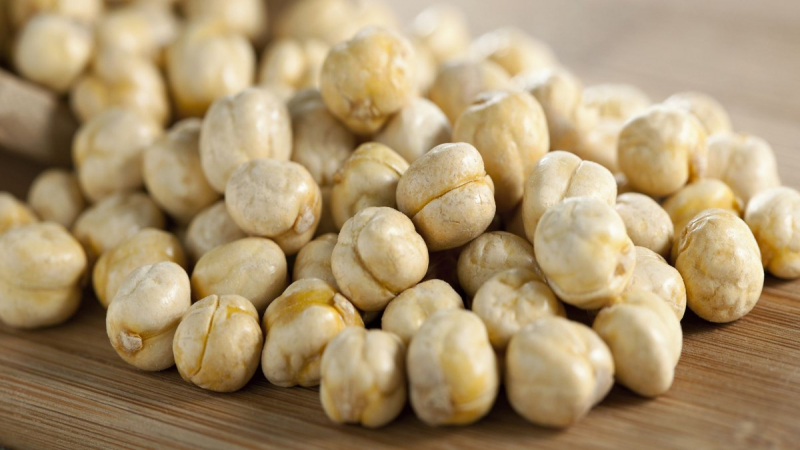
https://toplist.vn/ 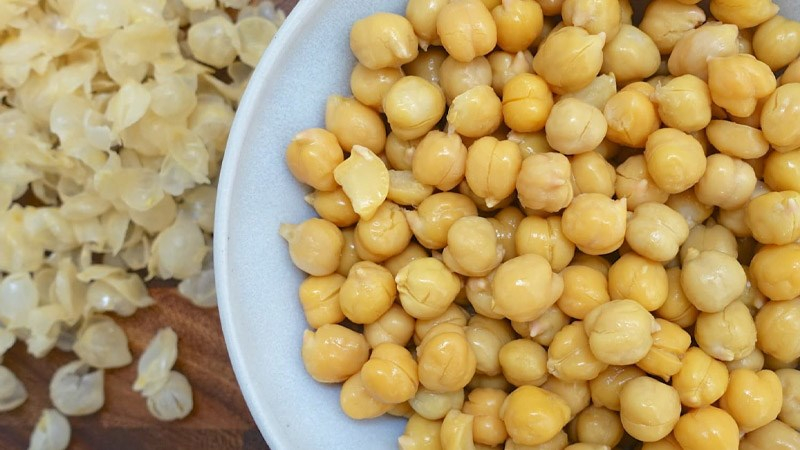
dienmayxanh.com -
Millet is one of the most nutritious foods for the body. Millet is known as a small grain but high in nutrients, a good grain for the whole family. Millet provides all the necessary and nutritious vitamins for children such as: vitamins B1, B2, A, E, Protein; The amount of minerals such as: lime, phosphorus, manganese, iron, copper, etc. is much more than other foods. Not only that, feeding your baby millet also helps to clean the mouth and prevent dental problems for the baby. For babies who have little sleep, often do not sleep deeply, millet contains a lot of melatonin, which has the effect of regulating sleep, making it easier for the baby to fall into a deep sleep. Another use of this tiny seed is to support the baby's digestive system, making it easier for the baby to digest, without bloating, through which the baby eats well, plays well and sleeps better.
However, there is a note that mothers should not cook millet with almonds to avoid causing diarrhea. Millet contains many nutrients necessary for the comprehensive development of children and also has many other effects. In addition to using as a food for babies, mothers can also boil water to bathe the baby with millet to treat heat rash and itching for the baby. Millet porridge is not only effective when feeding young children, but it also has a great effect on people who are sick or patients who have just recovered from illness. Millet porridge is cool, easy to digest, not bored, helps to add essential nutrients to help the body recover quickly. Therefore, each family should store millet in the kitchen and have a habit of using millet regularly to promote health for all members.
Some ways to prepare Millet for baby weaning:
- Pumpkin and millet porridge: Wash the millet and soak for about 1 hour, then remove and drain. Peel the pumpkin, remove the seeds, and dice. Steam the pumpkin until cooked and then sifted finely (reserving the steamed water). Put the millet seeds in a pot and cook until they are large, then add the sifted pumpkin and cook for another 15 minutes, then turn off the heat. Ladle the porridge into the bowl and let the baby enjoy..
- Millet Salmon Porridge: Soak your millet overnight (about 8 hours), then remove the millet from the shell and add it to the rice to cook porridge. The salmon you bring is washed, you can soak the fish with fresh milk without sugar to remove the fishy smell of the fish or marinate the lemon leaves around the surface of the fish. Lemon leaves have the effect of eliminating fishy odors and creating a quite special flavor. Wash your salmon, remove the skin and bones, and then cut it into small squares. Add a little soy sauce to the fish and mix well. Put the salmon in the porridge pot and cook for about 5 minutes, until the fish is cooked. Taste the seasoning with the child. Turn off the heat and add finely chopped coriander to the porridge to decorate, to bring up the smell of the bowl of porridge. Salmon you should give your baby from 8 months to avoid sea fish allergies. For babies who are not good at eating raw, you can grind porridge and salmon for your baby to eat easily.
- Chicken millet porridge: Wash the chicken and put it in a pot to boil. Then take out, mince or shred the chicken depending on the level of roughness of the baby. Plain rice, glutinous rice, clean millet. Then put in the pot of chicken broth, then bring to a boil. When the rice is cooked and expands, put the chicken in the pot, cook until the chicken is tender, then turn off the heat.
- Lotus seed millet milk: Wash millet and lotus seeds, soak for 6 hours, then put in a pot, fill with water, add a little salt to boil. When the water boils, continue to simmer for 20 minutes until soft, remember to skim off the foam and stir often to avoid burning the pot. Add a little rock sugar and cook for about 2-3 minutes, then turn off the heat. Put the seeds in a blender and blend them with the water. So the baby has a delicious cup of lotus seed millet milk.
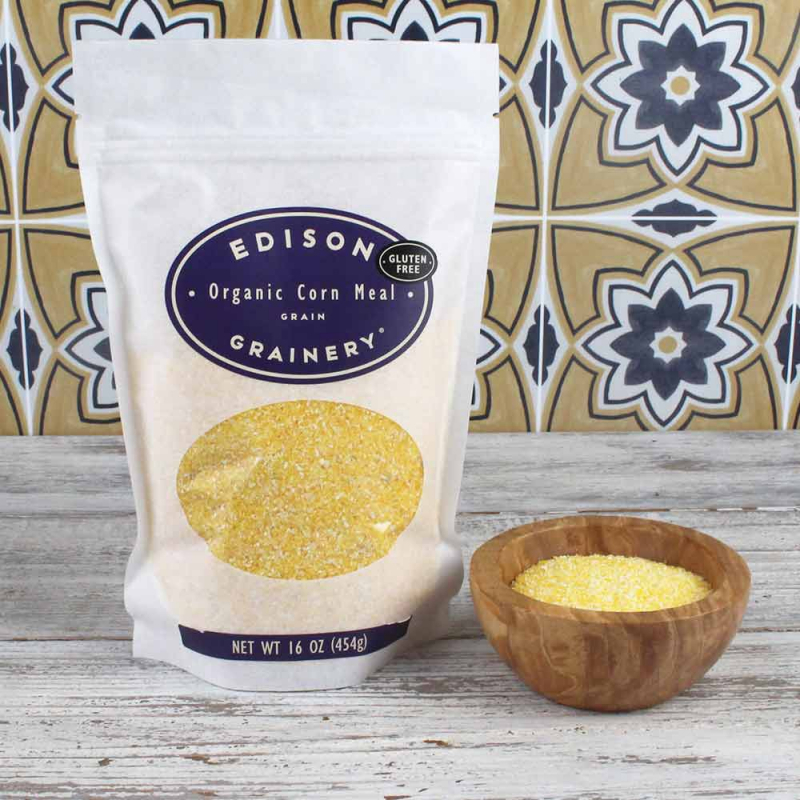
https://toplist.vn/ 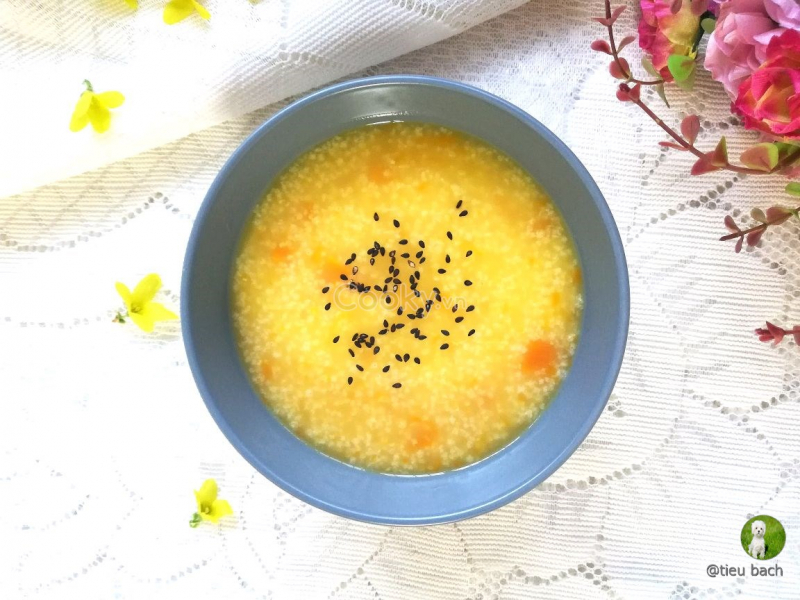
https://toplist.vn/ -
Peas are an extremely nutritious vegetable for babies when weaning. Peas are rich in fiber, vitamin C, vitamin A, iron and calcium. The nutritional value of peas is much greater than their small size. Did you know that a cup of peas contains more protein than a tablespoon of peanut butter and also provides a lot of calcium, vitamins A and C and iron. If you want to improve bone problems for children, this is the ideal food. Because, peas are not only rich in folic acid but also a rich source of vitamin K1, a substance capable of activating non-collagen proteins to maintain calcium in the bones.
With regular eating of peas will quickly solve the problem of constipation in a better way and the compounds in peas will help fight inflammation and antioxidants to help your baby have a healthy heart. In addition to fresh peas, currently on the market there are some types of peas that are dried with a long shelf life to help mothers use them more conveniently. However, before processing, remember to soak in water for 4-6 hours to quickly soften the beans.
Some ways to prepare Peas for baby weaning:
- Young corn pea soup: Put the young glutinous corn, carrots, and peas in the broth and bring to a boil over low heat for 20-25 minutes until the food is tender. Turn off the heat and put this mixture in a blender. Then you put it in a bowl and should add some cooking oil. This snack is suitable for babies from 7 months and up
- Porridge with lean meat peas: Wash clean rice and cook it into porridge. While the rice is blooming, add the beans and meat to cook together. When the porridge is about to cook, you take out the beans and the meat to puree. Once you have the mixture, continue to put it in the pot of cooked porridge, stir well and add cooking oil.i.
- Porridge with peas and pig brain: Wash the plain rice and soak it for 30 minutes. Bring rice to a boil with water and peeled soaked peas. Remove the membrane, blood veins, and puree pig brain with a few tablespoons of water into the cooked porridge. Let it boil again for 2-3 minutes. Add a little fish sauce, but it should be lighter than your taste. Add cilantro if you like. Put the porridge in a bowl and add cooking oil and stir well.
- Porridge of beef, peas and egg yolk: Minced beef, put in a blender and puree. The peas do not need to be cooked, also put in the blender, puree (Depending on the baby's age, the fineness is different. As the baby gets used to eating, the mother should reduce the fineness slowly to help the baby adapt later. It will be easier for the baby to eat rice.) When the rice flour is cooked, put the mixture of beef and beans into the porridge, beat the egg yolks to melt the outside and then put them into the porridge after adding the beef and beans. Bring to a boil again for 3-5 minutes, season to taste. Put the porridge down, add a little sesame oil or olive oil.
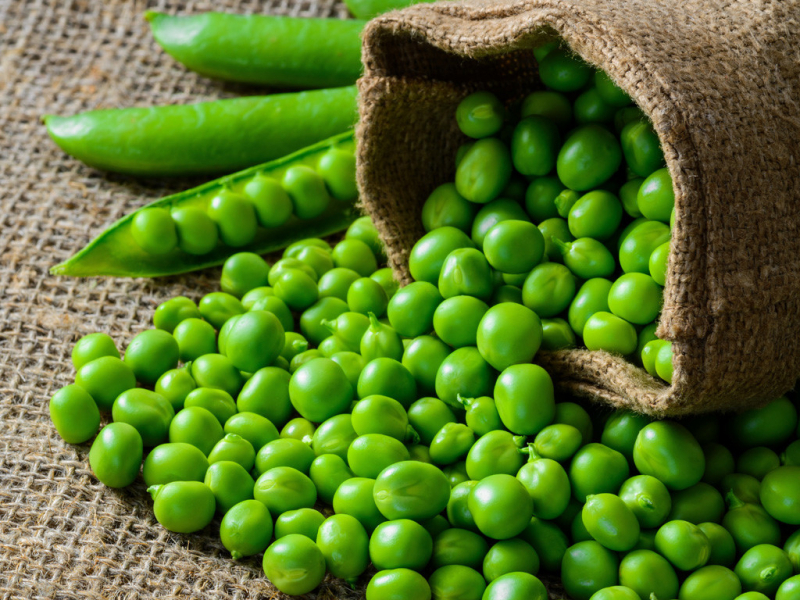
https://toplist.vn/ 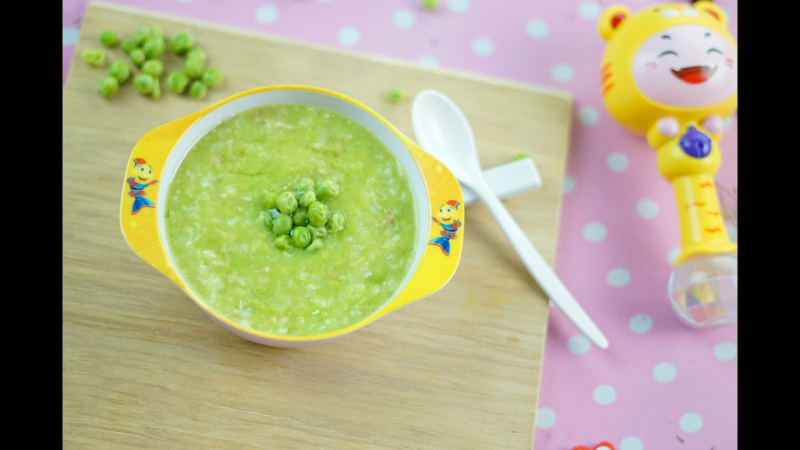
https://toplist.vn/ -
Adlay is good for both mother and baby. Adlay is a grain of the rice family. In Vietnam, Adlay is also known as barley, pearl barley, rice bran, mica... Adlay is a super rich source of calcium, magnesium, manganese, iron, phosphorus, zinc, vitamin B6... bountiful for the baby. Not only that, for postpartum mothers, Adlay is a recommended ingredient to process foods, soups, teas, and milk with beneficial milk properties that are both safe and effective.
For babies who have digestive problems, they can eat this seed to completely cure the disease. It is both safe and good for your baby's health. New mothers should eat Adlay seeds mixed with rice to stimulate milk production and milk flow will have more nutrients. Not only that, Adlay seeds also have the same effect as calcium to help children grow taller and prevent rickets. In addition, this is also a delicious and extremely nutritious ingredient, increasing the resistance of children. In addition, Adlay has a sweet taste, so it can be combined with many other foods, creating nutritious food for babies during the weaning period.
Some ways to prepare Adlay for baby weaning:
- Adlay and lotus seeds porridge: First soak lotus seeds with lemon juice overnight, then take them out to dry and grind into powder. Next, soak the glutinous rice in boiling water for about 3 hours and put it in the pot to simmer. Take Adlay seeds and grind them to a fine powder. You take all the ingredients into a pot of porridge that has been simmered and add a little water and continue to simmer on low heat for about 30 minutes. For babies over 1 year old, you can add honey to make the porridge more delicious for your baby to enjoy.
- Adlay, Snakehead and Corn Porridge: Adlay seeds soaked for 4 hours and then washed. Boil water, add Adlay seeds and boil for 25 minutes, snakehead fish for 10 minutes (take out and mince finely). Grated baby corn, then put it in the Adlay pot and cook for another 10 minutes (total cooking time 25 minutes). Put the white porridge in and stir for about 10 minutes, then scoop it out into a bowl for your baby to enjoy.
- Adlay and Azuki Bean Porridge: Wash rice, Adlay seeds, and azuki beans and soak for about 1 hour. Jujube washed, soaked until soft, then remove the seeds. Put Adlay, azuki beans, rice and jujube in a pot of boiling water, reduce heat to low and cook for another 2 hours. Turn off the stove, wait for the porridge to cool a bit, then the mother can let the baby enjoy.

https://toplist.vn/ 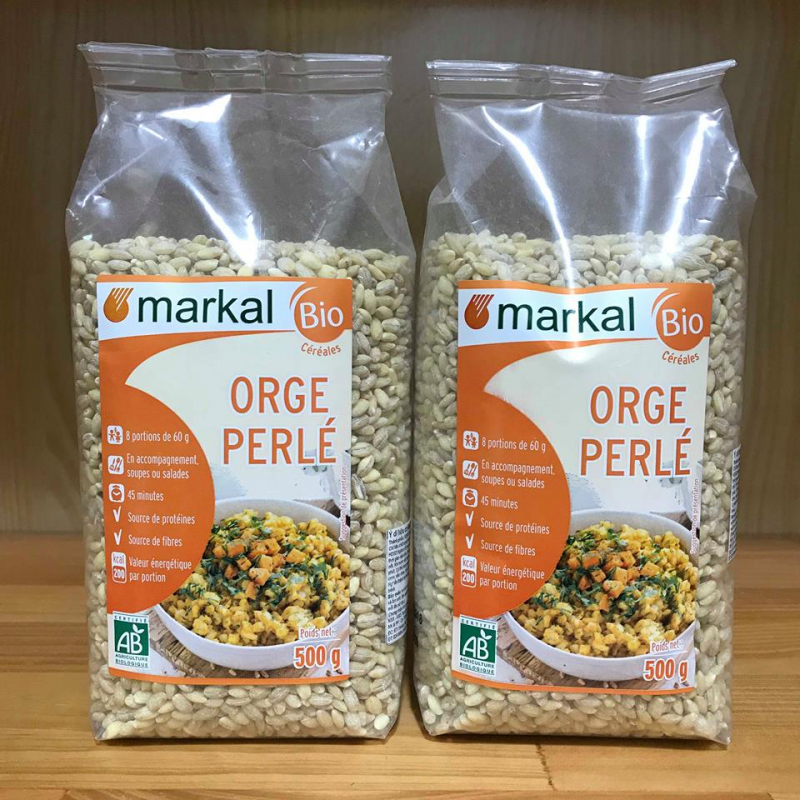
https://toplist.vn/ -
In the early stages of life, young children require a lot of energy because they are at a stage of rapid physical development. Walnuts are full of energy that can last for a long time and are extremely beneficial during this period of development. Many of the minerals found in walnuts are necessary for the optimal development of the baby. Bone growth is improved by calcium and magnesium. Producing hemoglobin get abundant iron. Electrolyte balance is properly maintained with potassium and sodium. Digestion, cell repair, and protein creation are all enhanced by phosphorus.
On the other hand, all the vitamins in walnuts including A, C, E, K, directly affect the baby's development. Right from building the strength of the immune system, to assisting in the conversion of glucose into glycogen, as well as stimulating metabolic activities, these vitamins do it all. In addition to all the nutrients, melatonin is also present in walnuts. This hormone is key in inducing sleep and regulating bodily functions during sleep. Sleep is essential for babies because most of their growth happens when they go into deep sleep. Walnuts are also rich in biotin, which will help keep your child's hair shiny and soft. However, mothers should only use walnuts for babies from 12 months old, if you want to use them earlier, you need to make sure that the walnuts have been processed to avoid choking and monitor your baby's allergies.
Some ways to prepare Walnuts for baby weaning:
- Oatmeal and Walnut Porridge: Need to prepare puree from oats and walnuts. We can buy fresh seeds, clean, roast and grind them. Should separate the two. Use broth from meat, fish, and vegetables to stir flour or cook porridge for baby to eat.
- Pandan and walnut milk: Need to clean and soften walnuts first. About 4 hours later, start draining and puree with clean water. Use a comb to filter out the water, discarding the body. North on the stove, add a little pandan leaves for fragrance, skim off the foam and turn off the stove. Because the baby's body is still weak, cooking milk is only used during the day.
- Tuna, Brown Rice and Walnut Porridge: Soaked brown rice softens. Marinate whole walnuts with brown rice until soft. Then put the mixture into a puree with 1 tablespoon of olive oil until it reaches a certain consistency. Boil the tuna to a moderate level, then shred it into small pieces and add it to porridge to eat or puree it with brown rice if your baby is eating solids.
- Make Oatcake with Walnuts: Soak oatmeal in water for about 5 minutes to soften and swell. Then add flour, yeast, sugar, salt, milk and mix well. Heat 60g of melted butter in a saucepan but do not bring to a boil, then pour in the above mixture. Wash 2 apples, peel, cut into strands. Finely chop walnuts, then mix these 2 types into the mixture in the above step until evenly. Wearing gloves, mold into a round cake that fits your mouth. Put the remaining 30g of butter in the pan, heat until melted and fry the freshly molded cakes. Turn gently until both sides are golden brown. Put the cooked cake on a plate and decorate by drizzling a little honey on top with a few thin slices of apple. This recipe is for babies who have eaten well, moms.
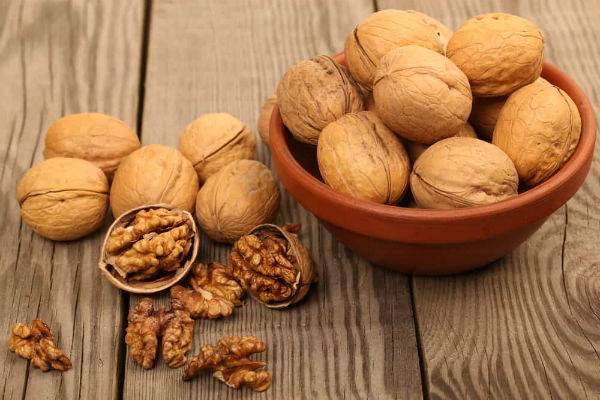
https://toplist.vn/ 
https://toplist.vn/ -
Under the age of 2, the baby's brain develops at a dizzying rate, so the baby needs to be provided with enough nutrients to meet the growing needs of the body. The nutrition contained in Almonds is essential for brain development. The presence of riboflavin (vitamin B2) and L-carnitine in almonds helps stimulate brain activity. The high fiber content present in almonds can also prevent constipation and strengthen the digestive system in children by regulating bowel movements. At the same time, thanks to the relatively high presence of phosphorus and calcium in almonds, eating almonds helps children strengthen the health of bones and teeth when they grow up.
Not only that, the good properties of almonds also help prevent osteoporosis later in life. Natural almonds are alkaline in nature, plus the presence of a lot of antioxidants, so eating almonds will help the body eliminate toxins thereby increasing your child's immunity significantly. The presence of several essential fatty acids gives almonds their excellent anti-inflammatory properties, thereby helping to protect your child's health into adulthood. Almonds are a benign nut, but when you let your child enjoy them, you should also pay attention to whether anyone has a family history of allergies to nuts, if so, the baby is also likely to be allergic to it. Almonds should be monitored when using.
Some ways to prepare Almonds for baby weaning:
- Almond milk: Soak almonds overnight. The next morning peel off the skin and grind the almonds with milk. Then heat the milk and add the oatmeal until it boils. If you are using sugar, add at this time, stirring to taste. If you use honey to sweeten it, turn off the heat and let it cool slightly before adding honey. If honey is added to the milk when it is too hot, it will lose nutrients. Only sugar and honey should be used for babies over 1 year old. Cool and filter the milk to separate the residue if your baby is young, it is best to drink the whole thing.
- Almond Apples: Slice an apple and boil in water until soft, then add finely ground almonds to the boil. Stir well until smooth, soft can be used by children.
- Lotus seed and almond sweet soup: Soak lotus seeds and almonds separately in warm water to soften the seeds. Then boil the water to soften the lotus seeds and almonds. Once cooked, take out, mix with sugar water to absorb sweetness.
- Almond egg soup for babies: First, soak the almonds in a bowl of cold water for about 30 minutes. Then proceed to peel the brown silk to get the white part! Next, put almonds and plain rice into the soy milk maker, pour in 800ml of filtered water, and start the machine for about 20 minutes. After the soy milk maker has been operating for 20 minutes, comb the almond rice milk mixture obtained through a sieve until smooth. Pour the almond rice milk mixture into the pot, add 30g of rock sugar, bring to a boil over low heat. Finally, separate the egg whites, put them in a pot of milk, stir until the egg whites are cooked, then turn off the heat. Ladle the almond rice milk egg soup into a bowl, wait for it to cool down a bit, then you can blow it and feed it to your baby!
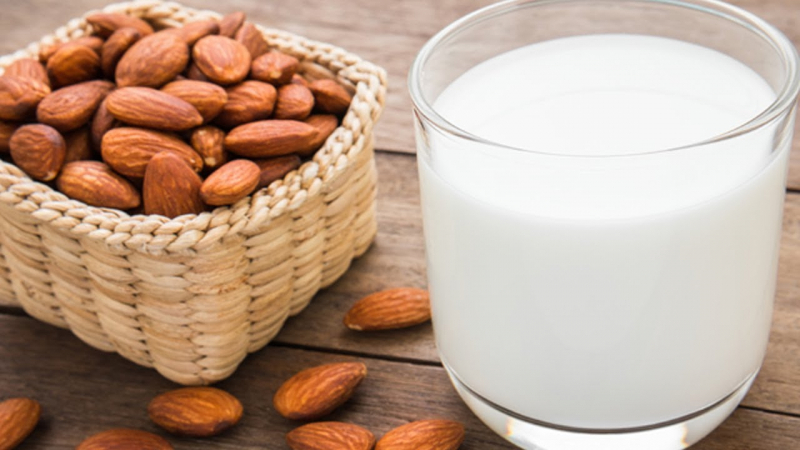
https://toplist.vn/ 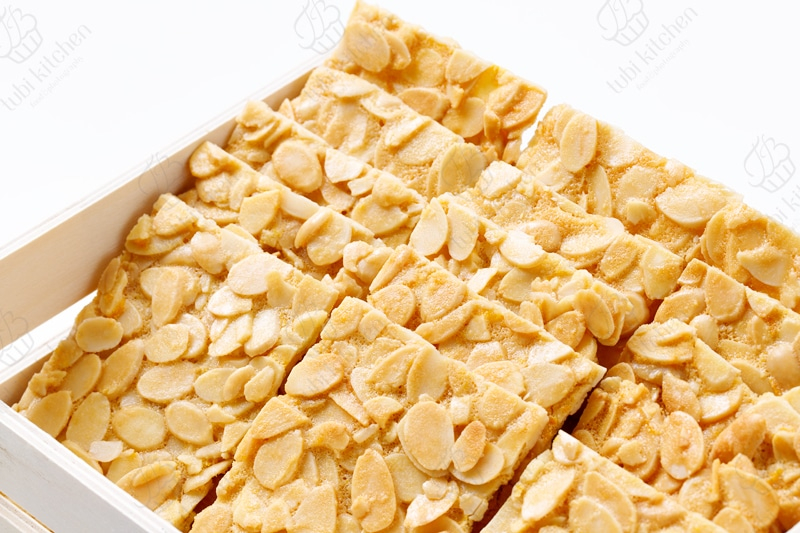
tubikitchen.com -
If you learn about Macadamia nuts, make sure you know that this is a nutritious nut that plays a very good role for people, especially the brain development of children. The kernel of the macadamia nut has an oil content of up to 78%, much higher than that of other nutritious nuts such as walnuts or almonds. It is worth mentioning that in the oil of macadamia kernel, more than 87% are unsaturated fatty acids, most of which are not synthesized by the human body. Macadamia nuts are up to 84% monounsaturated fat, 3.5% polyunsaturated and 12.5% saturated fatty acids. This nut is cholesterol-free and high in monounsaturated fatty acids. As a result, it helps the body to produce essential fatty acids by maintaining a balance between omega 6 and omega 3 fatty acids. In short, Macadamia nuts perfect nerve cell membranes so they can be used as a food. Supplements help improve intelligence of young children.
Macadamia nuts are rich in vitamins such as: pantothenic acid (vitamin B5) and folate (vitamin B9); minerals such as: potassium, phosphorus, magnesium and calcium. These vitamins and minerals are beneficial for the skeletal system, teeth, hair, hair and nails. Therefore, if you eat Macadamia nuts, children will be optimally supported in the process of forming healthy bones, teeth, as well as fluid balance in the body and immune system. In addition, these substances also contribute to help strengthen the nervous system and make the skin healthy from the inside. Macadamia nuts are a safe food for everyone. Although some people say it causes allergies. But despite being good for health and brain, macadamia nuts should only be used as a supplement, not a substitute for a main meal because it is not able to provide enough nutrients like regular foods. . At the same time, doctors recommend that babies under 12 months old should only eat a small amount and need to be monitored for allergies when eating.
Some ways to prepare Macadamia Nuts for baby weaning:
- Macadamia nut porridge: After washing the rice, soak it in water for about 30 minutes to help it soften. Put the mixture of macadamia nuts, rice, almonds along with 2 more bowls in a blender and puree. Next, boil this mixture until cooked and seasoning for the baby to taste. In addition, you can also grind more shrimp, vegetables or minced meat depending on your baby's preferences. Finally let it cool and your baby can eat it.
- Macadamia Nut Milk: Use 200g of Macadamia nuts with 200g of soybeans and 100g of almonds. After soaking these 3 seeds in water until soft, put them all in a blender to puree them. Filter the pulp and bring to a boil. When drinking, add a little sugar to make it easier for children to drink. This milk dish, in addition to being good for children's brains, is also appreciated for cooling down. In addition, it is also widely applied in the treatment of anorexia for children.
- Macadamia nut and beef porridge: Roasted rice on the stove, simmered with potatoes and carrots, with a little salt. Beef washed, chopped finely, put the pot on the stove, saute the onion and garlic, lower the heat, then stir-fry the beef quickly until the beef comes out, season with pepper and seasoning, turn off the stove. The cooked carrots are mashed, then put the meat into the porridge pot, then put the potatoes and carrots and the maca nut has been crushed, and then turn off the stove, so that you can give a little bit of Gac oil for your baby to enjoy.
- Macadamia nut crackers: To make this dish, you just need to prepare simple ingredients, like butter, brown sugar, vanilla juice, baking powder, eggs, flour, and macadamia nut puree. You can adjust the level of maca puree according to the development of your child's chewing jaw. When you have all the ingredients, turn on the 160-degree oven with a fan and line the top of the two baking trays with paper. Use an electric mixer to beat the sugar, vanilla, and butter until foamy, add the eggs and continue beating well. Next, you add the flour with baking powder into the mixture and then the macadamia nuts and mix well to shape the cake. Bake for about 15 minutes and the cake is ready to eat. You should also try the shapes that attract children's eyes so that they can eat more! This mouthwatering dish with your talents is sure to become your baby's favorite soon.
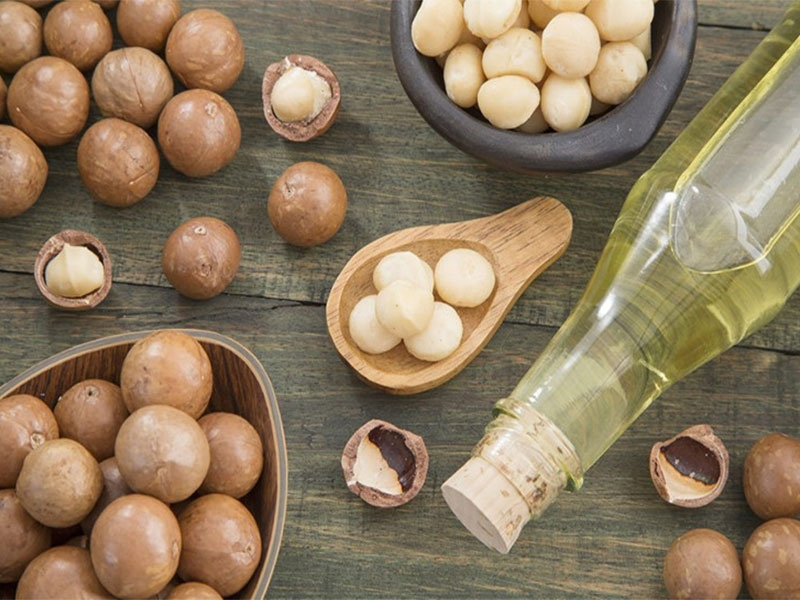
https://toplist.vn/ 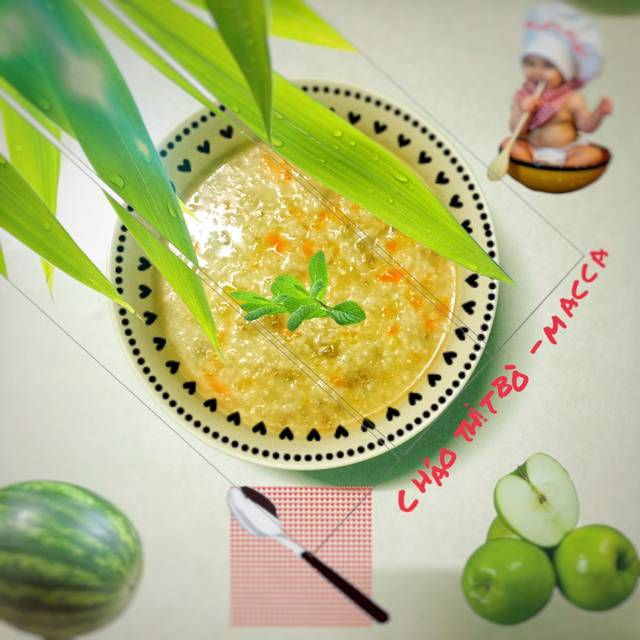
https://toplist.vn/












